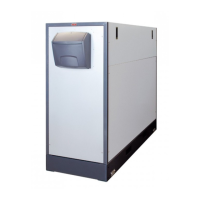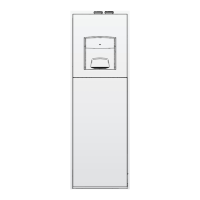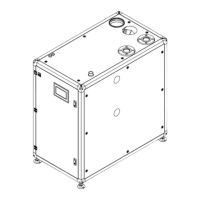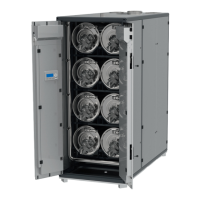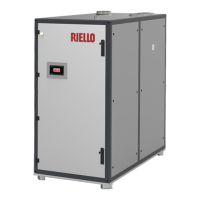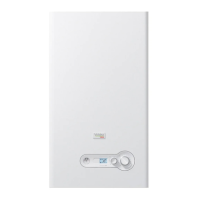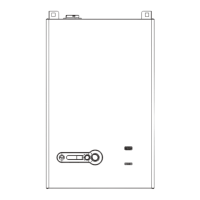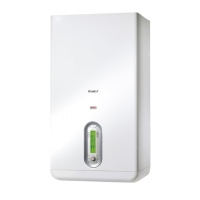Do you have a question about the Riello ALU 300 PRO power and is the answer not in the manual?
Detailed electrical wiring diagram showing connections for various components.
Lists and illustrates connections to be made by the installer for accessories and external devices.
Describes the buttons and indicators on the control panel in closed and open positions.
Explains the various symbols and data shown on the boiler's digital display.
Identifies and explains the different indicators and buttons on the main display screen.
Describes the three types of heat request systems: OT+, 0-10V, and room thermostat.
Describes the function that limits boiler outlet temperature.
Explains the safety feature that causes lockout if a safety temperature is reached.
Details actions taken when flue gas temperature exceeds set limits.
Describes protection against incorrect delivery/return temperature readings.
Describes the protection of modules against freezing.
Details the system's protection against frost using outdoor temperature.
Step-by-step guide for starting up the boiler after installation.
Steps for calibrating the first thermal module's combustion.
Steps for calibrating subsequent thermal modules.
Calibrating combustion with all heating elements operating.
Steps for converting the boiler to operate with different gas types.
How to adjust central heating temperature setpoints.
How to adjust domestic hot water setpoints.
How temporary error codes are displayed on the unit.
How permanent error codes are displayed, leading to lockout.
Comprehensive list of error codes and their descriptions.
List and explanation of user-configurable parameters for clock, calendar, and scheduling.
List and explanation of installer-configurable parameters for setpoints, anti-freeze, and curves.
Advanced parameters for OEM configuration, including PID adjustments and module settings.
Lists common causes and solutions for heating unit shutdowns during pre-ventilation or after ignition attempts.
Addresses issues like smell of gas, unburned products, cold system, and generator temperature problems.
Discusses causes and solutions for communication problems between modules.
| Fuel | Natural Gas / LPG |
|---|---|
| Max working pressure | 3 bar |
| Energy class in heating mode | A |
| NOx class | 5 |
| Type | Condensing |
| Electrical supply | 230 V / 50 Hz |
| Gas connection | 3/4" |
| Thermal efficiency at 30% of the heat output | 108.3 % |
| Rated heat output at 80/60 °C | 30.7 kW |
